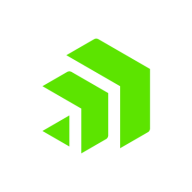

Chef and AWS Amplify are tools in the application management and deployment category. AWS Amplify appears to have the upper hand due to its ease of use and seamless integration with AWS services.
Features: Chef offers automation capabilities, infrastructure as code, and integration with multiple cloud platforms. AWS Amplify provides swift deployment, comprehensive libraries for frontend frameworks, and backend support, including AI integration.
Room for Improvement: Chef could improve ease of use and reduce complexity in setup and operation. Better GUI interfaces and more comprehensive beginner guides would help. AWS Amplify could enhance its local development experience and expand offline capabilities. Providing more detailed customization options and extending support for more non-AWS environments would be beneficial.
Ease of Deployment and Customer Service: Chef requires a steeper learning curve due to its complex setup but offers comprehensive control. AWS Amplify facilitates a user-friendly deployment model with the advantage of AWS's extensive support network and documentation.
Pricing and ROI: Chef may involve higher upfront costs due to its customization needs, offering significant ROI through scalable automation. AWS Amplify uses a pay-as-you-go model, aligning costs with usage and providing faster ROI through reduced time to market.
| Product | Market Share (%) |
|---|---|
| Chef | 1.5% |
| AWS Amplify | 2.0% |
| Other | 96.5% |


| Company Size | Count |
|---|---|
| Small Business | 4 |
| Midsize Enterprise | 2 |
| Large Enterprise | 1 |
| Company Size | Count |
|---|---|
| Small Business | 3 |
| Midsize Enterprise | 7 |
| Large Enterprise | 19 |
AWS Amplify is a set of purpose-built tools and features that lets frontend web and mobile developers quickly and easily build full-stack applications on AWS, with the flexibility to leverage the breadth of AWS services as your use cases evolve. With Amplify, you can configure a web or mobile app backend, connect your app in minutes, visually build a web frontend UI, and easily manage app content outside the AWS console. Ship faster and scale effortlessly—with no cloud expertise needed.
Chef, is the leader in DevOps, driving collaboration through code to automate infrastructure, security, compliance and applications. Chef provides a single path to production making it faster and safer to add value to applications and meet the demands of the customer. Deployed broadly in production by the Global 5000 and used by more than half of the Fortune 500, Chef develops 100 percent of its software as open source under the Apache 2.0 license with no restrictions on its use. Chef Enterprise Automation Stack™, a commercial distribution, is developed solely from that open source code and unifies security, compliance, infrastructure and application automation with observability. Chef provides an unequaled developer experience for the Coded Enterprise by enabling users to express infrastructure, security policies and the application lifecycle as code, modernizing development, packaging and delivery of any application to any platform. For more information, visit http://chef.io and follow @chef.
We monitor all Release Automation reviews to prevent fraudulent reviews and keep review quality high. We do not post reviews by company employees or direct competitors. We validate each review for authenticity via cross-reference with LinkedIn, and personal follow-up with the reviewer when necessary.